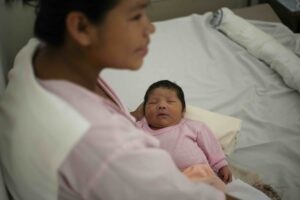
Women aged 65 and above remain at a heightened risk of cervical cancer caused by human papillomavirus (HPV), according to a comprehensive observational study published in Gynecology and Obstetrics Clinical Medicine. This revelation challenges existing guidelines that typically recommend discontinuing cervical cancer screening for women over 65 who have previously had normal smear tests.
The study’s findings are particularly concerning given the rising global incidence of cervical cancer in this age group. Recent data from the World Health Organization highlighted 157,182 new cases and 124,269 deaths among women aged 65 and above worldwide in 2022. These statistics have prompted researchers to advocate for a reevaluation of current screening policies.
Examining the Data: A Closer Look at HPV Infection in Older Women
The study, conducted in Shenzhen, China, retrospectively analyzed cervical cancer screening data from 628 healthcare facilities between 2017 and 2023. It aimed to identify high-risk HPV infection characteristics, including infection rates, genotype distribution, and the prevalence of cervical intraepithelial grade 2 or worse (CIN2+).
CIN2 is characterized by moderately abnormal cells in the cervical lining, which could progress to more serious abnormalities and cervical cancer if untreated. The study found that among the 2,580,829 women screened, 2,152,766 had complete data available. Notably, only just over 2% of these women had been vaccinated against HPV.
Among the older women, nearly 14% tested positive for high-risk HPV genotypes, compared with 8% of those who were younger.
Age-Related Differences in HPV Infection and Cancer Detection
The prevalence of high-risk HPV infections and CIN2+ was notably higher in women aged 65 and above compared to their younger counterparts. Older women were more likely to be infected with multiple HPV types and to have abnormalities detected during screening.
The study revealed that 23% of older women were infected with several different types of HPV, compared to 16.5% of younger women. Furthermore, the percentage of CIN2+ abnormalities detected during colposcopy was higher in older women (14%) than in younger women (9%).
Despite the low overall cancer detection rate among women over 65, the study found that the risk of CIN2+ increased significantly with the number of high-risk HPV infections. A single infection increased the risk 56 times, a double infection 66 times, and three or more infections 85.5 times.
Implications for Screening Guidelines and Future Research
This study’s findings suggest that current screening guidelines may not adequately address the risks faced by older women. The researchers emphasize the need for continued screening in this demographic, particularly as life expectancy increases and many older women may not have been vaccinated or thoroughly screened in their younger years.
“These data indicate that women [aged 65 and above] are a high-risk group for cervical cancer incidence and mortality, necessitating urgent attention from countries worldwide,” the researchers stated.
Declining immunity and postmenopausal hormonal changes could further increase susceptibility to high-risk HPV infection and cervical cancer, especially for women who missed early screening opportunities. The study’s authors call for more comprehensive research to explore these risks and to inform policy changes that could better protect older women from cervical cancer.
While the study’s scope was limited to one region in China and did not include women over 65 in the national screening program, its findings underscore the importance of revisiting and potentially revising global cervical cancer screening guidelines to better serve aging populations.





